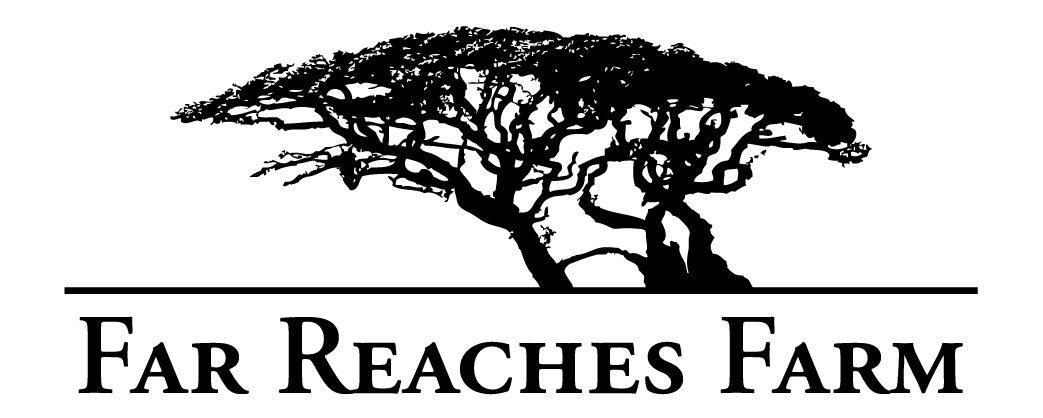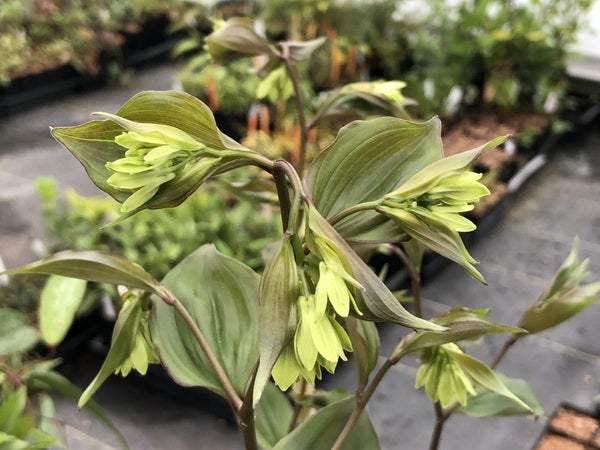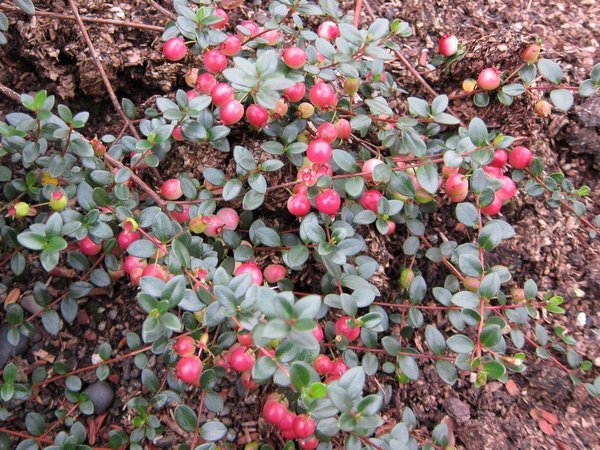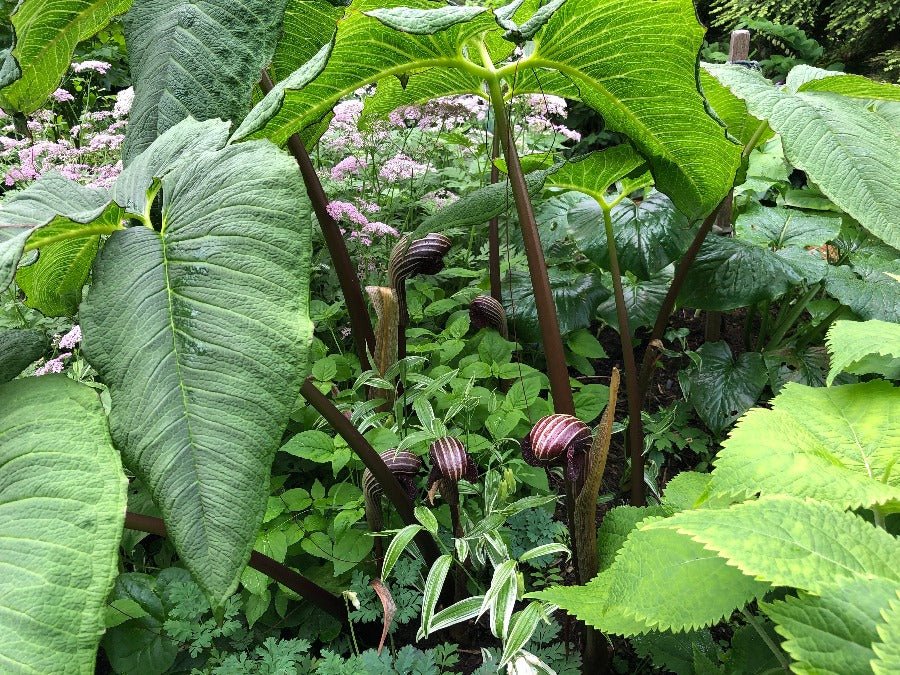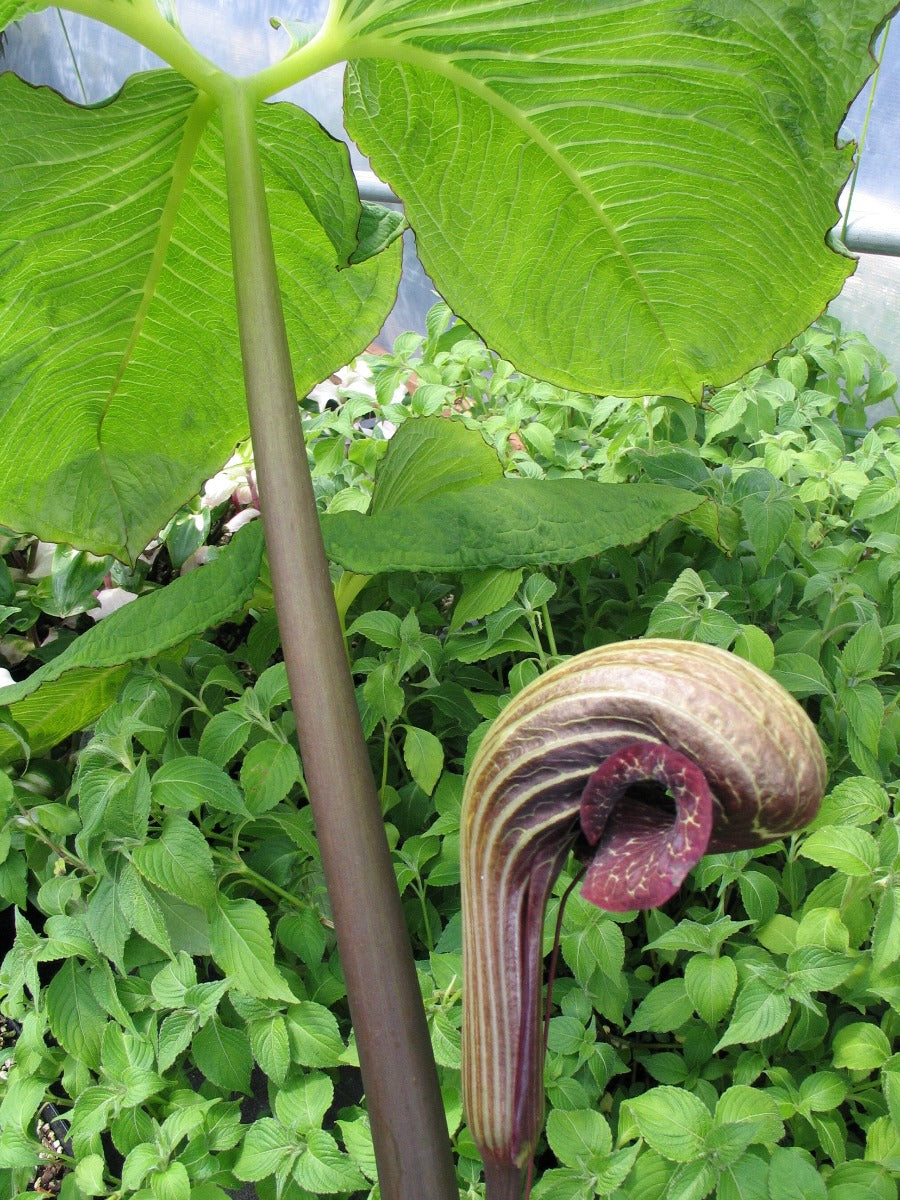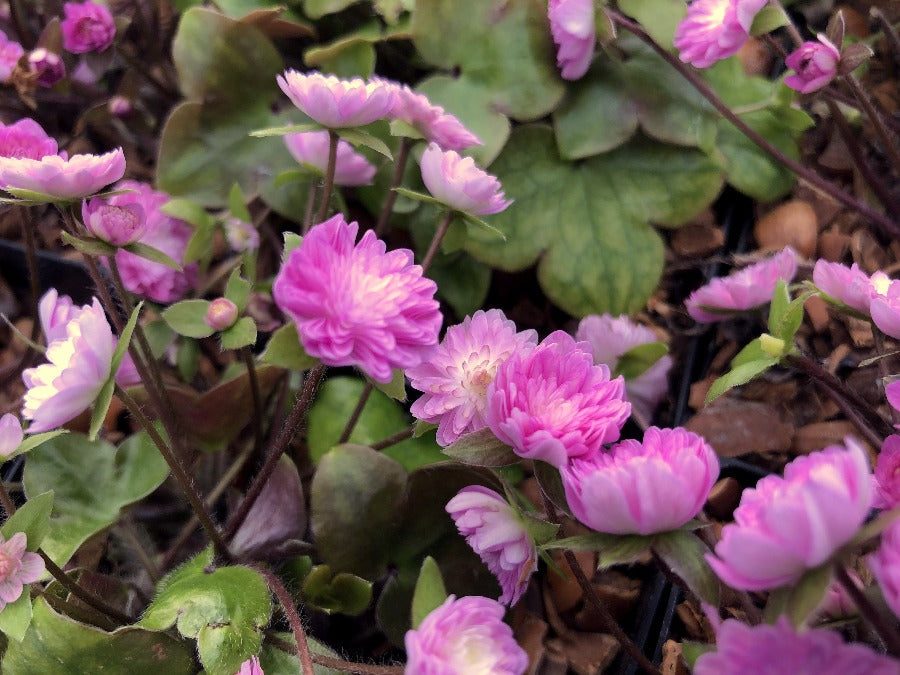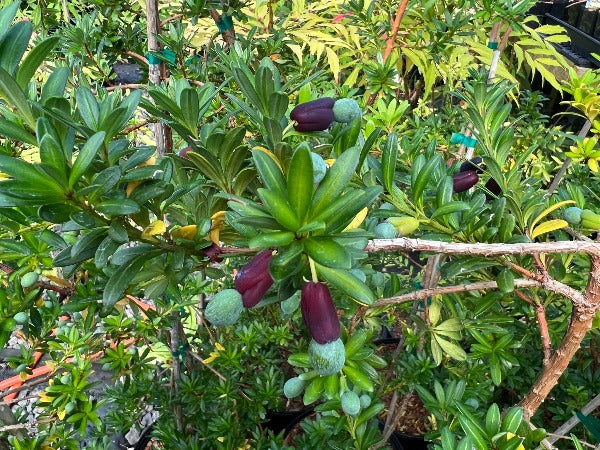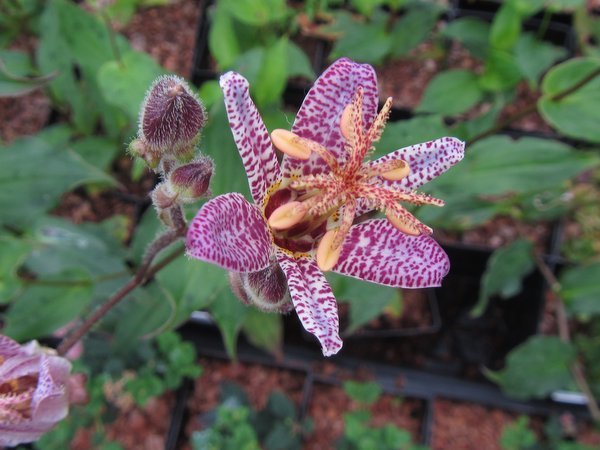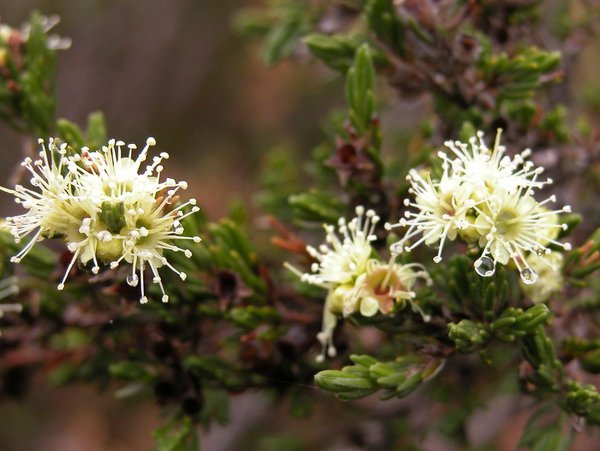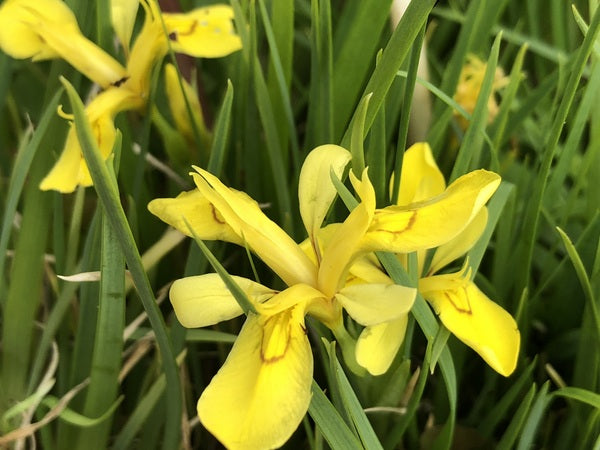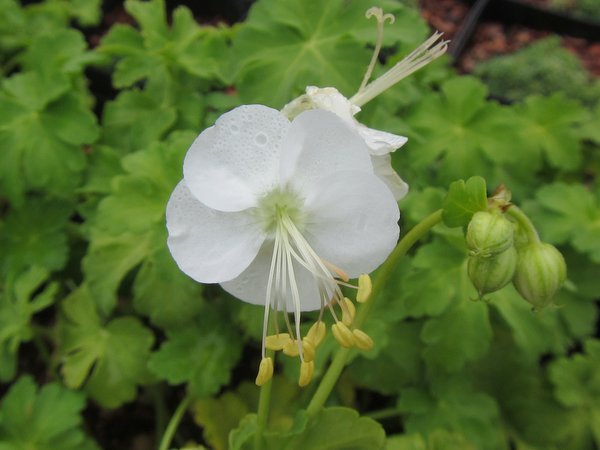Sort by:
1758 products
1758 products
As they begin to emerge and unfurl, the huge trifoliate leaves catch the 30"-40" threadlike spadix appendage dangling from the white-striped, maroon-purple hooded flowers and carry it aloft in a decidedly wanton display. The horizontal rhizomes will increase over time leading to several flowering stems, becoming something about which one has no recourse but to brag shamelessly. This Jack in the Pulpit has proven itself over many years to be a stellar performer in our shade garden. There are some Jacks that languish or don't persist but this simply gets bigger and better every year. The rhizomes can push up near the surface so check in the Fall and mulch if necessary - most prudent in the event of severe winter cold. Seed-grown, these are still small tubers but of all the things you have waited for in your life, this surely must rate among the most worthy.
Potentially the first offering of this plant in the US we brought this back from Far Reaches sister city Pan-Global Plants, the stellar nursery of plantsman Nick Macer who wild collected these in Guizhou. Very unique look with dark green rosettes of leaves centered by a cluster of yellow flowers, will slowly spread to form a truly special groundcover Broader and fewer leaflets than the more often seen var. stenophylla.
Perhaps the most attractive of the many Scheffleras we grow with its dusty pinkish-purple petioles and multiple tiers of leaflets (unusually good floral display as well from which one assumes it takes its name). This combined with the usual jurassic looking stems and graceful chandelier canopy that attracts us so hopelessly to the genus is almost too much to bear. This is easily evidenced by our insistence on toting in and out of the greenhouse each year a massive display pot housing one of these handsome beasts. These are seed-grown from our plants from the recent first North American introduction.
